One of the first blog posts I ever wrote at Buffer is this beginner’s guide to SEO. When published originally, it had the title “Beginner’s Guide to SEO Even Your Mom Can Understand.”
Holy casual sexism!
When I think of all the amazing women and moms I know in search optimization and search marketing (here’s a primer on just a few), I am still super embarrassed to have made this giant mistake even nearly 2 years later.
I’d like to think I and the whole team at Buffer have come a long way since then. Our company-wide value to do the right thing has led us to focus on inclusivity, and creating the most welcoming environment possible for new customers, community members and teammates.
Along the way we’ve noticed quite a few mistakes (like mine above!) and it feels good to share them here. If you’d like to create a more inclusive workplace and company, maybe these examples will help you with a few examples of what not to do. :)

1. Falling into the “even your mom” trap
I’d love to explore my mistake with the”Beginner’s Guide to SEO Even Your Mother Can Understand” a bit more in-depth here.
How could someone who calls herself a feminist not see how this headline would be at least off-putting, if not downright offensive, to half the population? And what could bearing children possibly have to do with one’s ability to comprehend search engine optimization?
My mom would be the first to say that she doesn’t understand SEO, but my father wouldn’t fare any better in an SEO quiz. So why is it that moms tend to bear the brunt of this type of speech?
I decided to do some research. It turns out the “so easy your mom can do it” theme has been prevalent in tech for a long time. (Google the phrase; it’s very interesting!) When something becomes so ingrained in the culture, it becomes what’s called institutionalized discrimination—so prevalent that it’s easy to barely notice it anymore.
There are quite a few great resources online about why it’s problematic to use this kind of terminology, and there’s a simple fix to be more aware of it when you see it online, according to Dave Winer:
“The way to tell if something is sexist (or racist or ageist or whatever ist) is to change the gender, race or age, and see if it still works.”
Here’s a more in-depth look at how to reframe your mind with things you read or write:
“In analyzing statements about gender roles, it is sometimes helpful to substitute for gender some other trait, such as skin color or race. This helps to illustrate bias, because many of us are more sensitized to racial stereotypes: Is Ubuntu so easy that a white boy could use it? Does it pass the white boy test? If my white boyfriend can figure it out, you can too! This can be a useful way to ‘test‘ language and reveal implications.”
I’ve been using this reframing technique lately, and it’s super effective.
So: Big apology to moms. We can do better.

2. Less-than-inclusive roundup posts
I love a good expert roundup blog post! Posts that ask multiple industry leaders for their favorite tool or tip can be such a great way to pack a ton of wisdom into one goodie-packed page.
They’re also an opportunity to highlight unique and lesser-heard voices, raise up experts from different walks of life and celebrate the variety of experience that comes with diversity.
Some of the roundup posts we’ve done in the past at Buffer haven’t quite taken advantage of this great opportunity.
Our post on counterintuitive advice from entrepreneurs had tons of great advice, but from one main perspective: That of a white, male entrepreneur. Take a look at a few of the folks cited:
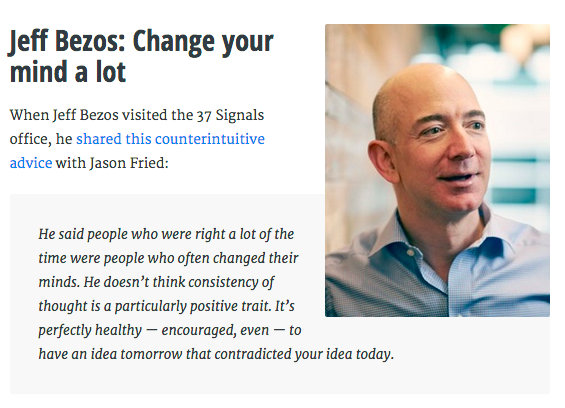
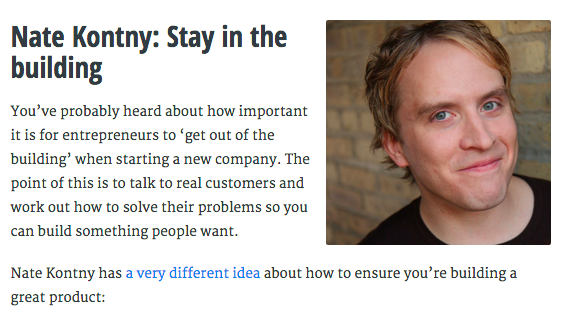

Our community was quick to point out the missed opportunity on this one (thanks, y’all!):


It feels great to work on making some changes here.
Our most recent roundup post, A Private Peek at the Home Screens of Top Marketers, features a higher percentage of women (7 of 22), and I think we can keep improving here, particularly when it comes to elevating experts of color.
3. Not inviting women to imagine themselves at Buffer
On the hiring side, we’ve made changes as well. Eliminating the word “hacker” in job descriptions was one step we took to make our engineering jobs more woman-friendly, and we recently spotted another opportunity to change.
Notice anything interesting about this form?
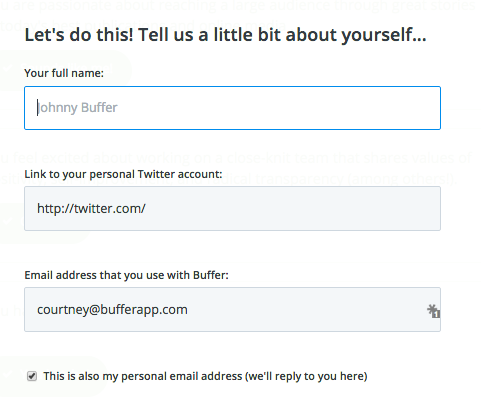
Johnny Buffer is probably an awesome guy, but the Buffer team is already predominantly male. That signals to me that men might not have as tough a time picturing themselves at Buffer as women could. Why not give them a hand?
That’s how Johnny Buffer became … Jenny Buffer!

Now, this is a really tiny change. You may be thinking that it’s hardly worth writing about here, which I totally get.
But even little changes can make a big difference. As Moz’s awesome Erica McGillivray noted in her great post on Ways to Proactively Welcome Women Into Online Marketing:
“There’s a strong correlation between seeing yourself demographically and dreaming that you could do that job too. We all need inspiration and heroes to look up to and aspire to be like.”
4. (Even more!) masculine language
Can you spot the difference in these two sentences?
“We’re looking for a person who embodies this community spirit and is excited to share his knowledge with the broader web development world.”
“We’re looking for a person who embodies this community spirit and is excited to share their knowledge with the broader web development world.”
Until recently, our listing for a Reliability Developer included the first sentence—another example of a tiny word that can make a big difference in deciding whether a work environment is right for you, or even interested in welcoming you.
We’ve talked before about how we’re working on weeding out gendered language like “guys” (as in “Hey guys; what’s up?”) when speaking to a group. The above example is pretty much the reason why this matters to us.
Recently, we were lucky enough to have Buffer’s Diversity Dashboard featured in a USA Today article. In the same article, we were super inspired to see another startup, npm, taking things one step further on the “guys” front: They’ve got a “guys jar,” in which members working on removing this word from their vocabulary put a dollar in the jar every time they say it accidentally.
“At npm participation in the Guys Jar is totally voluntary, but a lot of us do it, and we tend to put a dollar in whenever we accidentally gender something gender-neutral or misgender somebody. When we cross $50, we donate the money to a charity.”
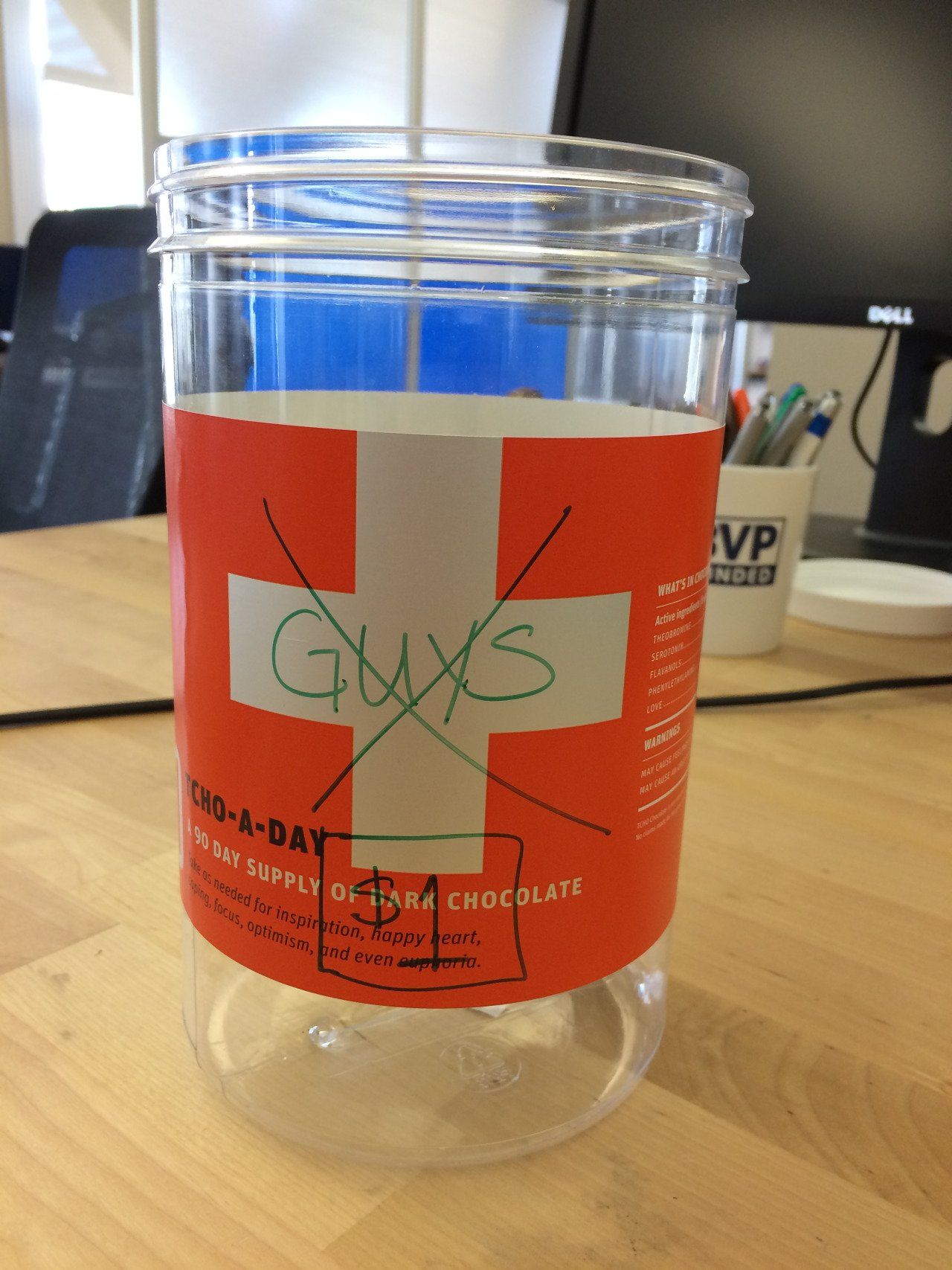
What a great idea!
Recently we’ve had some interesting discussions about using terms like “man” and “bro” in friendly emails and have decided to avoid them as well.
Since the terms don’t really have a female equivalent that we can think of, it feels like they might exclude women from feeling the same level of closeness to teammates as the guys might have. Would love to hear your thoughts here!
5. Confusing cultural fit and cultural contribution
Sunil recently passed on to me one of the most fascinating and resonant articles I’ve read about the importance of diversity in building a team: Hiring: It’s About Cultural Contribution, Not Cultural Fit.
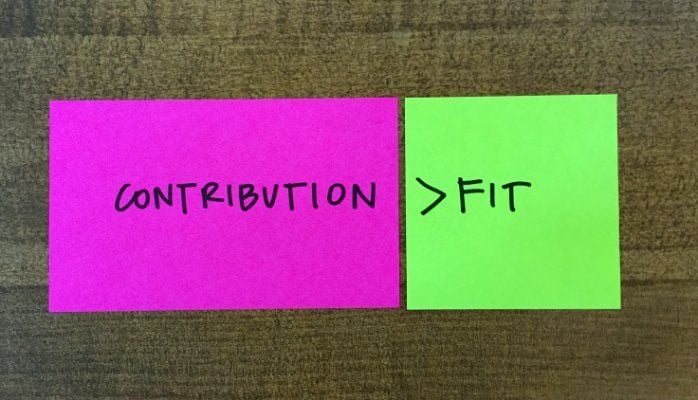
In this post, Diego Rodriguez of IDEO explains why he chooses candidates who could make a positive contribution to the future of his company’s culture.
“I don’t optimize for fit with our existing culture, because over time that will lead to uniformity and irrelevancy. Instead, I try to envision a future where this person’s unique point of view has shifted how we work and what we value. I hire for an individual’s potential cultural contribution.”
Reading this made me realize that the way I’ve been thinking about cultural fit at Buffer might be all wrong!
Because of our values, I believe we already go beyond the idea of cultural fit as simply, “Is this a person I want to hang out with?” But actively prioritizing cultural contribution over present-day fit feels like an exciting shift to me!
Sunil is one step ahead of me on this one, which is why I’m so glad he’s heavily involved in hiring. Here are his thoughts on cultural contribution:
“I think a way of looking at cultural contribution is about focusing on what aspects is Buffer culture isn’t at all great at yet, and striving to improve on those areas. I think I see it no different than trying to hire more folks in Asia, since we’re trying to improve our remote working culture in those areas, or looking for someone who can help us with finances. Similarly I think we’re always asking how can we make Buffer a better place to work for moms and dads, those with disabilities, etc. Hiring and working towards improving Buffer’s culture where we’re lacking in the most positive way feels key to me.”
I’m keen to keep exploring the difference between these two concepts in future posts, and I’m excited to hear your thoughts on this topic as well!
Over to you
It feels great to unburden ourselves of some of these inclusivity mistakes in the hopes that they might help others. We’re still learning a lot in this area, so there will most likely be more mistakes to report.
Have you made or come across any of these mistakes before? How did they make you feel?
If you’re working on building diversity at your company or practicing more inclusivity in your life, I’d love to hear about your tips and experiences!
Try Buffer for free
190,000+ creators, small businesses, and marketers use Buffer to grow their audiences every month.



